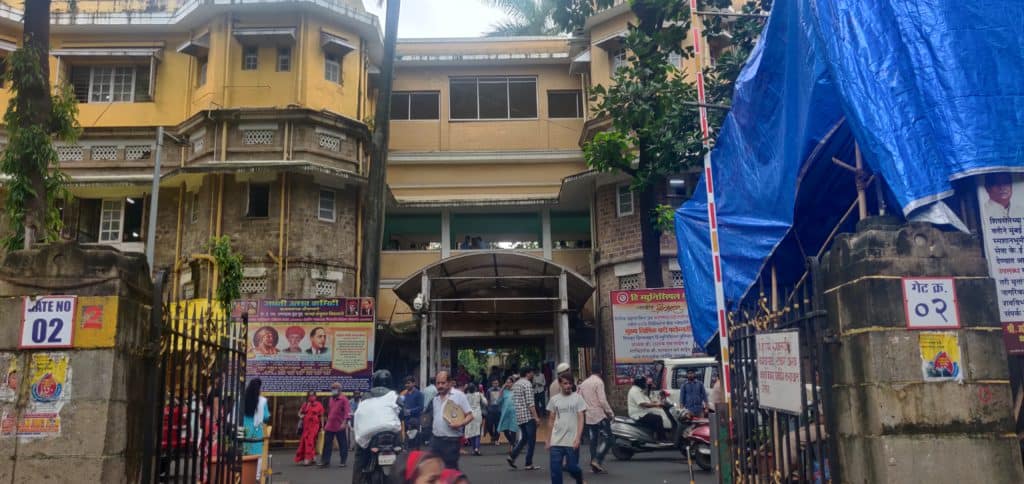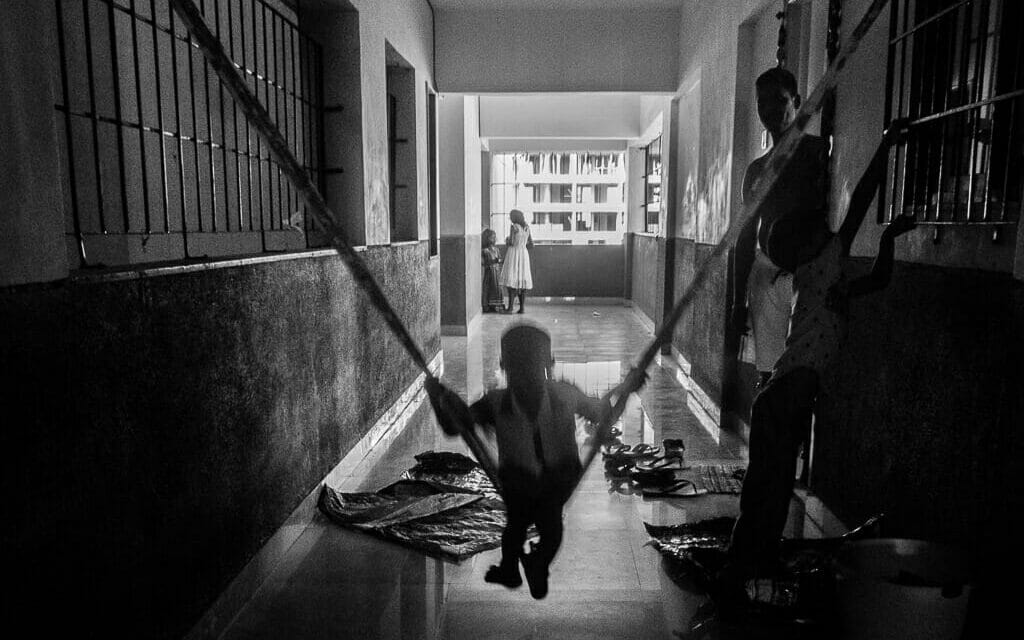The continued prevalence of certain infectious diseases in Mumbai highlights the need for improved urban planning for the city. For over a decade now, Dr Rajesh (name changed) has been seeing his patients complain about the same illnesses year after year at his civic-run dispensary situated inside Kurla’s slums. The most common of them all, he says, is tuberculosis and scabies.
Kurla falls under Brihanmumbai Municipal Corporation’s L ward, which registered a total of 1,013 TB cases in 2021. Since 2012, the ward has registered a total of 10,326 TB cases, the highest among all the 24 wards.
“I cater to daily wage labourers and their families. One small poorly ventilated room is shared by many family members. Such arrangement makes it easy for communicable diseases to spread,” he says.
Mumbai experienced a measles outbreak in October, in subsequent days the city reported multiple deaths amongst malnourished children due to the disease. M-east ward, considered to be the most deprived of all wards, initially saw the most number of measles cases. In January it was surpassed by L ward.
Read more: Missed vaccines, misinformation and other gaps highlighted by Mumbai’s measles outbreak
Both these wards have limited access to basic services such as sanitation, water and healthcare. A large number of residents of the two wards live in slums and informal settlements, they rely on public health facilities and vaccination centres, which were overburdened due to COVID.
‘Lack of resources is the bigger problem and not slums’
While Dr Rajesh pins the blame on the residents and their “ignorance” for all their woes, urban planners like Hussain Indorewala are more careful to look at the larger causes. “In Mumbai, people have a tendency to connect every problem to slums. We need to hold our municipal corporation and governments accountable first,” he says.
“Planning includes ensuring adequate public health facilities. We also need our Public Distribution System and mid-day meals to work effectively in controlling malnutrition.” It is noteworthy that Mumbai’s major health infrastructure is centred around the island city, with 12 public hospitals there even though only 24% of Mumbai resides in the area. On the other hand, 76% who live in the suburbs have access to only eight such hospitals.
The relationship between spread of diseases and informal settlements has a lot to do with perception, says Indorewala. He explains, “Any large public space which is closed is a site that can be a cause for the spread of an infectious disease.” He gives an example of COVID-19 and how it spread in closed air-conditioned rooms.

Upon probing a little, Rajesh says the reason for the prevalence of certain diseases in slums is the poor living conditions that the state has allowed to flourish.
“When we take our [health-related] requests to additional commissioners or even to BMC’s health department, they are never given the same attention as, say, an engineer’s requirement for some infrastructure project,” he says.
“There is a shortage of staff, shortage of medicines. I often have to tell my patients to buy the medicine from outside because it is unavailable here.” Additional Commisioner (Health) Sanjeev Kumar says medicines purchase is a continuous process and BMC has empowered health departments at ward levels to address the problem as and when required.
Read more: KEM hospital experience shows what unplanned medical expenses mean for the masses
Milnd Mhaske, CEO of Praja Foundation, a civic NGO, says there is a process for the purchase of medicines and ensuring adequate stock. “But there are delays reported due to bureaucratic process. Many a times getting it approved from the accounts department side can be time consuming.”
Mumbai has five civic-run super-speciality hospitals, five special hospitals, 15 peripheral hospitals, 26 maternity homes, and 186 municipal dispensaries. As per the Urban Design Plan Formulation and Implementation norms, Mumbai should ideally have one dispensary per 15,000 population. By those standards, there is a shortage of 659 dispensaries in BMC’s healthcare system.
According to the last Praja report, Mumbai needs 133 more dispensaries in the city region which has a 27% slum population, the western suburbs need 315 more dispensaries with a 43% slum population and 211 more dispensaries in eastern suburbs with a 51% slum population.
Public vs private
A study on healthcare choices in Mumbai’s slums interviewed 549 slum dwellers from 13 slum areas and concluded that people who participated in the research preferred private healthcare provided for most mild conditions. However, the response was split between public (42%) and private (54%) in cases of serious trauma.
Public healthcare played an important role in maternal health (60%) and 33% of women reported to access a mixture of both public and private services during pregnancy. According to the 75th round of National Sample Survey, 73.7% of all those who were hospitalised in Maharashtra for treatment were treated in private hospitals.

Mhaske adds, “It is the failure of the government systems that people have shifted to private facilities. Public health facilities are supposed to be for everybody. But in our country we have come to a compromise that public health facilities are only to be accessed to by the poor. This was not the case a generation back where middle class went to government hospitals and even government schools.”
A pharmacist at Rajesh’s dispensary also pointed out that drinking water facility is not available in their unit for the staff. She said no higher authority has come to inspect the dispensary in the ten years where she has been working. Mhaske says, “Health committee should be visiting these dispensaries. People at leadership positions do not venture out as much but it is their duty or they need to at least create a team that does spot visits.”
Bartering health for a house
Slum Rehabilitation Authority (SRA) oversees the demolition of slums and the rehabilitation of its residents. The rehab houses are located in SRA buildings which are constructed by private developers. The developers are incentivised with an extra Floor Space Index which they can use to construct additional buildings or units and sell them at a market rate.
In principle, SRA houses are meant to improve the living conditions for slum dwellers. However, these structures have been the subject of criticism for their improper planning in terms of amenities in the surrounding area, lack of safety measures, and poor ventilation.
Read more: 27 years on, Mumbai’s Slum Rehabilitation Authority (SRA) has failed to deliver
Both Indorewala and Mhaske point out that public health has a preventive aspect which falls short if there is poor planning. “It can mean ensuring good housing, open spaces to exercise. This can help in reducing the burden of non communicable diseases. As of now even Mumbai’s roads are not fit to walk on,” Mhaske says.
There are many SRA buildings in the Buddha Colony of Kurla west, Chitra, a community health worker in the area, lives in one such SRA structure constructed in the mid-2000s. “Kurla is very packed and congested compared to other parts of the city. People fall sick here very frequently,” she says.
Chitra refers to her family as purane log (age-old residents) of the building as many who had gotten the house sold it and moved to other parts of the city. “Our slums were right here where this building stands. They were demolished in early 2000 and we were given this house.” Her house is a little over 225 sq ft, as per SRA norms, and there is only one window in the kitchen.
She lives on the third floor, and each floor has about 30 houses. The last two floors of the SRA building houses residents who purchased the flats at market price from the developer. The spiral staircase of the five-floor building is risky to climb and the living situation gets worse in the monsoon. “Even the water we receive is polluted and the ground floor gets waterlogged when it rains,” she says.

Sameer, a first-floor resident of the building, says they purchase drinking water from outside and do not rely on the water supplied by the corporation. “A lot of residents who got a house here sold it and ran away to other places. It is an unsafe building in all aspects, who wants to live in such a condition?” he says.
Read more: Explainer: Dharavi redevelopment — What lies ahead
The ground floor is also the worst in the building in terms of living conditions where rooms lack natural light and ventilation. A total of 318 TB patients in SRA buildings in M-east, who were surveyed as a part of a study by an NGO called Doctors For You (DFY), said they had contracted the disease after moving into the buildings. The study concluded there is a correlation between poor architecture and the rise in TB cases in these settlements.
“TB cases have reduced in our building now but there are still a lot of them in Buddha Colony,” Chtira says. Her building is also plagued by mosquitoes for several months soon after the first rainfall.
Ravikant Singh, Director of DFY, says “The water supply system and sanitation are in a poor condition in most slums and SRA buildings. They are very prone to waterlogging which further causes a rise in vector-borne diseases.”
He adds that Mumbai has an ever-increasing population and mainly consists of manual labourers who migrate here in search of livelihood. “People come from rural areas to build this city but they are not provided with proper facilities. Things are improving a little now, but It may take many decades for any large-scale improvement.”
This article is part of a series on Urban Planning in Mumbai, supported by a grant from the A.T.E. Chandra Foundation.